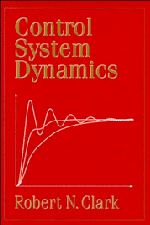Book contents
- Frontmatter
- Contents
- Preface
- 1 Introduction to Control System Engineering
- 2 Mathematical Models of Mechanical Systems
- 3 Mathematical Models of Electrical Systems
- 4 Mathematical Models of Electromechanical and Electrohydraulic Systems
- 5 Summary of Modeling Principles for Physical Systems
- 6 Solution to the Initial-Value Problem
- 7 Pole-Zero Methods of Analysis for Single-Input-Single-Output Systems
- 8 Automatic Feedback Control
- 9 Dynamic Analysis of Feedback Control Systems
- 10 Design of Feedback Control Systems
- 11 Frequency Response Analysis of Linear Systems
- 12 Stability Analysis by Nyquist's Criterion
- 13 Dynamic Analysis of Feedback Systems by Frequency Response Methods
- 14 Design of Feedback Systems by Frequency Response Methods
- 15 Advanced Topics
- Appendices
- Answers to Problems
- Bibliography
- Index
2 - Mathematical Models of Mechanical Systems
Published online by Cambridge University Press: 05 June 2012
- Frontmatter
- Contents
- Preface
- 1 Introduction to Control System Engineering
- 2 Mathematical Models of Mechanical Systems
- 3 Mathematical Models of Electrical Systems
- 4 Mathematical Models of Electromechanical and Electrohydraulic Systems
- 5 Summary of Modeling Principles for Physical Systems
- 6 Solution to the Initial-Value Problem
- 7 Pole-Zero Methods of Analysis for Single-Input-Single-Output Systems
- 8 Automatic Feedback Control
- 9 Dynamic Analysis of Feedback Control Systems
- 10 Design of Feedback Control Systems
- 11 Frequency Response Analysis of Linear Systems
- 12 Stability Analysis by Nyquist's Criterion
- 13 Dynamic Analysis of Feedback Systems by Frequency Response Methods
- 14 Design of Feedback Systems by Frequency Response Methods
- 15 Advanced Topics
- Appendices
- Answers to Problems
- Bibliography
- Index
Summary
Introduction
We first study a very simple class of mechanical systems – those consisting of a single rigid body or of two rigid bodies simply connected. The bodies will be restricted to planar motion in most cases, but they may rotate as well as translate in the plane. We recognize that most practical mechanical systems feature parts that move in three dimensions, but our restrictions are necessary here because the dynamics of massive bodies in three-dimensional motion is, in most cases, beyond the scope of this introductory book on automatic control. However, our use of simple systems has some advantages. We can use the freebody diagram to formulate directly from Newton's and Euler's laws the differential equations that describe the dynamics of the motion without resorting to the more abstract approach of using variational principles, which is usually necessary in the three-dimensional case. It is also possible in this simple setting to illustrate an important principle of mechanics that one must observe when expressing Euler's law for a body undergoing angular acceleration with respect to inertial space. Furthermore, since the motions of bodies in many practical applications are approximately planar, our simple approach in such cases will yield useful results.
The mathematical model we seek for each of the systems studied here is a set of differential equations that describe the physical system and its environment, plus certain auxiliary information that permits us to use these equations to determine the dynamic behavior of our system.
- Type
- Chapter
- Information
- Control System Dynamics , pp. 5 - 43Publisher: Cambridge University PressPrint publication year: 1996

